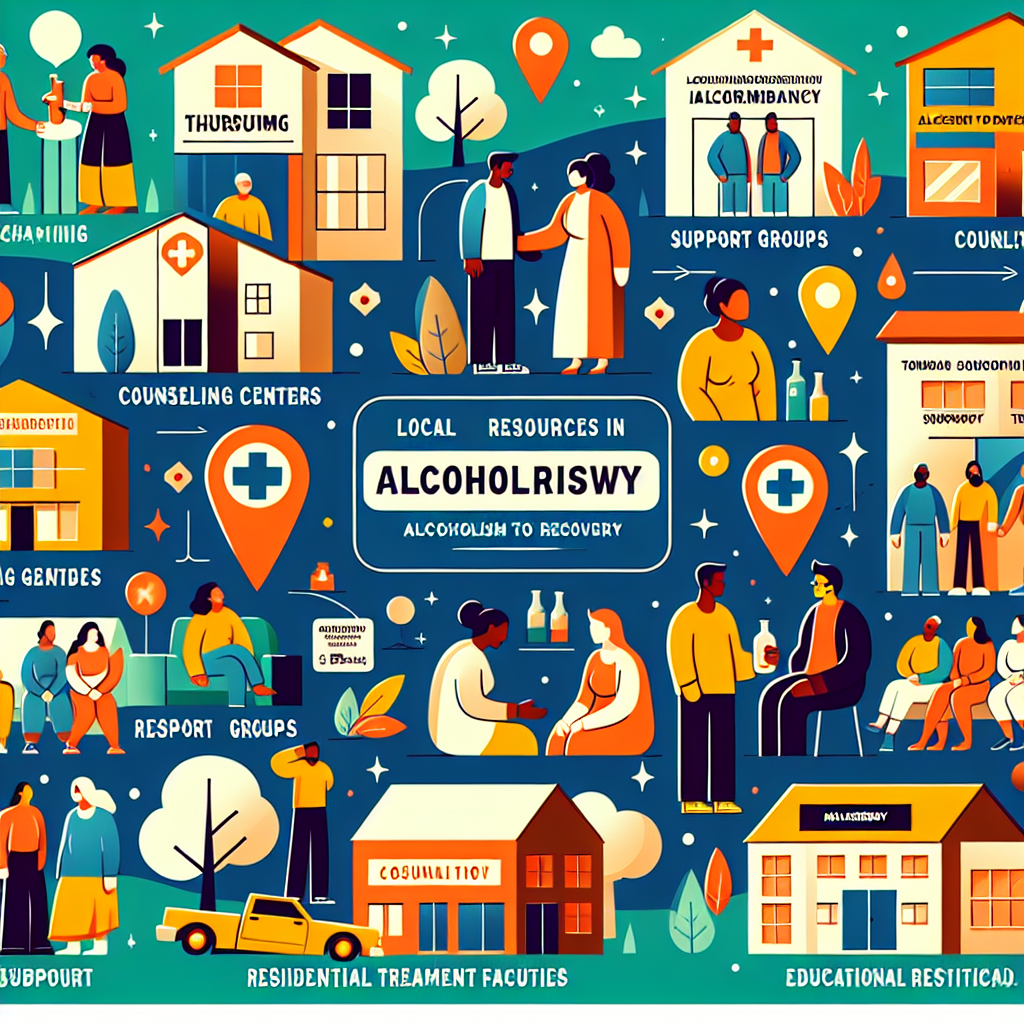-
Table of Contents

“Rebuild, Reconnect, Rediscover: Your Guide to Thriving After Rehab”
Introduction
Transitioning from rehab to everyday life can be a challenging yet rewarding process. It involves reintegrating into daily routines, maintaining sobriety, and building a support system to ensure long-term recovery. This transition requires careful planning, a strong commitment to personal health, and the utilization of various resources and strategies to navigate potential obstacles. By understanding the key steps and preparing adequately, individuals can successfully move from a structured rehab environment to a fulfilling and independent life.
Strategies For A Smooth Transition From Rehab To Daily Life
Transitioning from rehab to everyday life can be a daunting process, but with the right strategies, it can also be a rewarding journey toward a healthier and more fulfilling existence. One of the most crucial steps in this transition is to establish a strong support system. Surrounding yourself with family, friends, and support groups who understand your journey can provide the emotional and practical support needed to navigate the challenges that may arise. These individuals can offer encouragement, accountability, and a sense of belonging, which are essential for maintaining long-term recovery.
In addition to building a support network, it is important to create a structured daily routine. Structure provides a sense of stability and predictability, which can be particularly comforting during the early stages of transitioning from rehab. Incorporating activities such as regular exercise, healthy meal planning, and sufficient sleep can significantly contribute to overall well-being. Moreover, engaging in hobbies and interests that bring joy and fulfillment can help to replace old, unhealthy habits with positive and productive ones.
Another key strategy is to set realistic and achievable goals. Setting small, manageable goals can provide a sense of accomplishment and motivation to keep moving forward. These goals can range from personal milestones, such as maintaining sobriety for a certain period, to professional aspirations, like finding a job or pursuing further education. Celebrating these achievements, no matter how small, can boost self-esteem and reinforce the progress made.
It is also essential to develop coping mechanisms for dealing with stress and triggers. Life after rehab will inevitably present challenges, and having effective strategies in place can make a significant difference in how these situations are handled. Techniques such as mindfulness, meditation, and deep-breathing exercises can help manage stress and prevent relapse. Additionally, identifying and avoiding triggers, or finding healthy ways to cope with them, is crucial for maintaining sobriety.
Continuing therapy and counseling is another important aspect of a smooth transition. Professional guidance can provide ongoing support and help address any underlying issues that may arise. Therapy can also offer a safe space to discuss feelings, challenges, and successes, which can be incredibly beneficial for mental and emotional health. Many rehab programs offer aftercare services, which can include individual therapy, group counseling, and other resources to support long-term recovery.
Furthermore, it is important to stay connected with the recovery community. Attending support group meetings, such as those offered by Alcoholics Anonymous or Narcotics Anonymous, can provide a sense of camaraderie and shared experience. These groups offer a platform to share struggles and successes with others who understand the journey, which can be incredibly empowering and reassuring.
Lastly, practicing self-compassion and patience is vital. Transitioning from rehab to everyday life is a process that takes time, and it is important to be kind to oneself during this period. There may be setbacks and challenges, but viewing these as opportunities for growth rather than failures can foster resilience and determination. Remembering that recovery is a lifelong journey and that each step forward, no matter how small, is a victory can help maintain a positive and hopeful outlook.
In conclusion, transitioning from rehab to everyday life involves a combination of building a support system, creating a structured routine, setting achievable goals, developing coping mechanisms, continuing therapy, staying connected with the recovery community, and practicing self-compassion. By implementing these strategies, individuals can navigate this transition with confidence and optimism, paving the way for a healthier and more fulfilling life.
Building A Support System After Rehab: Key Steps For Success
Transitioning from rehab to everyday life can be a daunting experience, but building a strong support system is crucial for long-term success. The journey to recovery doesn’t end when you leave the rehab facility; in fact, it is just the beginning. Establishing a network of supportive individuals and resources can make all the difference in maintaining sobriety and achieving a fulfilling life. To start, it is essential to recognize the importance of surrounding yourself with positive influences. This means seeking out friends and family members who understand your journey and are committed to supporting your recovery. Open communication with these individuals can foster a sense of trust and accountability, which is vital for staying on track. Additionally, consider joining support groups such as Alcoholics Anonymous (AA) or Narcotics Anonymous (NA). These groups provide a safe space to share experiences, gain insights, and receive encouragement from others who have faced similar challenges.
Moreover, professional support should not be overlooked. Therapists and counselors specializing in addiction recovery can offer valuable guidance and coping strategies. Regular therapy sessions can help address underlying issues that may have contributed to substance abuse, as well as provide tools for managing stress and avoiding relapse. Furthermore, many rehab facilities offer aftercare programs designed to support individuals as they transition back into everyday life. These programs often include continued therapy, support group meetings, and other resources tailored to your specific needs.
In addition to emotional and psychological support, practical assistance is also crucial. This may involve finding stable housing, securing employment, or continuing education. Many communities have resources available to help with these aspects of reintegration. For instance, job placement programs and vocational training can provide the skills and opportunities needed to build a stable and rewarding career. Similarly, educational programs can open doors to new possibilities and help you achieve your long-term goals.
Another key aspect of building a support system is establishing healthy routines and habits. Structure and consistency can provide a sense of stability and purpose, which are essential for maintaining sobriety. This might include setting regular sleep patterns, engaging in physical exercise, and adopting a balanced diet. Additionally, finding hobbies and activities that bring joy and fulfillment can help replace the void left by substance use. Whether it’s painting, hiking, or volunteering, these activities can provide a sense of accomplishment and connection to others.
It’s also important to be mindful of potential triggers and high-risk situations. Developing a relapse prevention plan with the help of your support network can prepare you for these challenges. This plan might include identifying warning signs, creating a list of coping strategies, and having a list of contacts to reach out to in times of need. Remember, it’s okay to ask for help and lean on your support system when necessary.
Lastly, self-compassion and patience are vital components of a successful transition. Recovery is a lifelong journey, and setbacks are a natural part of the process. Instead of viewing them as failures, consider them opportunities for growth and learning. Celebrate your progress, no matter how small, and remind yourself of the strength and resilience it took to come this far.
In conclusion, building a robust support system after rehab involves a combination of emotional, psychological, and practical assistance. By surrounding yourself with positive influences, seeking professional help, establishing healthy routines, and being mindful of potential triggers, you can create a strong foundation for lasting recovery. Embrace the journey with self-compassion and patience, knowing that each step forward is a testament to your courage and determination.
Q&A
1. **Question:** What are some strategies to maintain sobriety after leaving rehab?
**Answer:** Strategies to maintain sobriety after leaving rehab include attending support group meetings (such as AA or NA), creating a structured daily routine, avoiding triggers and high-risk situations, seeking ongoing therapy or counseling, and building a strong support network of friends and family.
2. **Question:** How can someone manage stress and avoid relapse during the transition from rehab to everyday life?
**Answer:** Managing stress and avoiding relapse can be achieved by practicing mindfulness and relaxation techniques, engaging in regular physical exercise, setting realistic goals, maintaining a healthy diet, and utilizing coping strategies learned in rehab, such as journaling or talking to a sponsor or therapist.
Conclusion
Transitioning from rehab to everyday life requires a structured plan that includes continued therapy, a strong support network, and healthy lifestyle changes. Establishing a routine, setting realistic goals, and staying connected with support groups can help maintain sobriety. It’s crucial to identify and avoid triggers, seek professional help when needed, and stay committed to personal growth and well-being.



